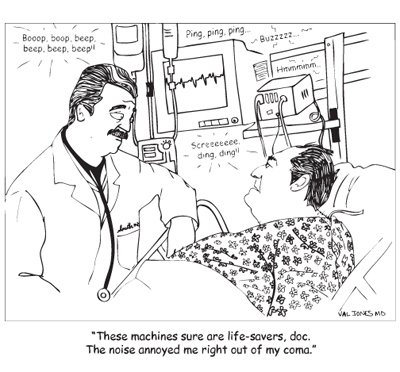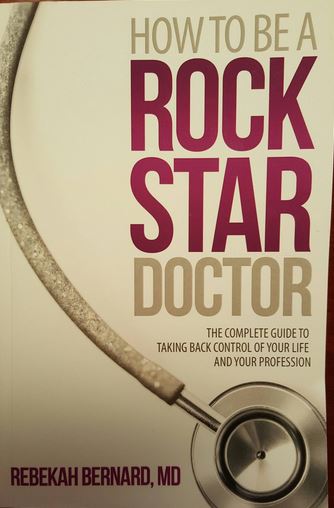July 30th, 2011 by Michael Kirsch, M.D. in Health Policy, Opinion
No Comments »

 As a gastroenterologist, I treat hundreds of patients with heartburn. You already know the names of the medicines I prescribe, since they are advertised day and night on television and appear regularly in print newspapers. Pharmaceutical representatives for each one of these drugs come to our office each claiming some unique clinical advantage of their products over the competitors. They have a tough job since the medicines are all excellent, are priced similarly and are safe. On some days we will have 2 or 3 reps visiting us, each one proffering a medical study or two that supports their product. They show us graphs where their drug is superior to the others regarding an event of questionable clinical import. Their goal is to show that the graph line of their drug is going up, while those of their competitors are going down.
As a gastroenterologist, I treat hundreds of patients with heartburn. You already know the names of the medicines I prescribe, since they are advertised day and night on television and appear regularly in print newspapers. Pharmaceutical representatives for each one of these drugs come to our office each claiming some unique clinical advantage of their products over the competitors. They have a tough job since the medicines are all excellent, are priced similarly and are safe. On some days we will have 2 or 3 reps visiting us, each one proffering a medical study or two that supports their product. They show us graphs where their drug is superior to the others regarding an event of questionable clinical import. Their goal is to show that the graph line of their drug is going up, while those of their competitors are going down.
Physicians, like me, who do give these folks some time, have mastered the art of the slow head nod as the drug’s virtues are being related. In the past, the relationships they cultivated with us translated directly into prescriptions being written. Not so today, when our prescribing pens are controlled by insurance company formulary requirements. Those drugs that are not on the coveted list not just swimming upstream, they’re trying to scale a waterfall.
Drug companies know a lot more about us than we know about them. They have Read more »
*This blog post was originally published at MD Whistleblower*
April 4th, 2011 by M. Brian Fennerty, M.D. in Health Tips, Opinion
No Comments »

H. pylori dominated the GI news in the 1990s, and despite it disappearing from the front pages, it remains a common and important clinical problem. The dominant recommended initial treatment strategy has been a clarithromycin-based PPI triple therapy, with either amoxicillin or metronidazole as the third drug. This approach was based on clinical studies, ease of use, and tolerability factors. Bismuth-based quadruple therapy (a bismuth agent, metronidazole, tetracycline, and a PPI), despite demonstrating excellent activity, was usually relegated to second-line therapy because of the complexity of the dosing as well as compliance and tolerability issues.
However, duringthe last decade, the widespread use of macrolides in the general population has led to rising resistance to clarithromycin (by 30% or more of H. pylori strains in some areas), and when clarithromycin resistance is present, the efficacy of clarithromycin-containing triple therapy falls from about 80% to 50% or even lower. However, clarithromycin resistance does not affect the efficacy of bismuth-based quadruple therapy, and that efficacy of those regimens remains at about 90% when patients are compliant with the treatment.
So the questions for you to consider are:
1) Do you know what the clarithromycin resistance rate in H. pylori is in your community?
2) What first-line H. pylori treatment regimen do you use?
3) Are you planning to change your H. pylori treatment strategy now that clarithromycin resistance rates are rising?
Let us know what you think.

*This blog post was originally published at Gut Check on Gastroenterology*
 As a gastroenterologist, I treat hundreds of patients with heartburn. You already know the names of the medicines I prescribe, since they are advertised day and night on television and appear regularly in print newspapers. Pharmaceutical representatives for each one of these drugs come to our office each claiming some unique clinical advantage of their products over the competitors. They have a tough job since the medicines are all excellent, are priced similarly and are safe. On some days we will have 2 or 3 reps visiting us, each one proffering a medical study or two that supports their product. They show us graphs where their drug is superior to the others regarding an event of questionable clinical import. Their goal is to show that the graph line of their drug is going up, while those of their competitors are going down.
As a gastroenterologist, I treat hundreds of patients with heartburn. You already know the names of the medicines I prescribe, since they are advertised day and night on television and appear regularly in print newspapers. Pharmaceutical representatives for each one of these drugs come to our office each claiming some unique clinical advantage of their products over the competitors. They have a tough job since the medicines are all excellent, are priced similarly and are safe. On some days we will have 2 or 3 reps visiting us, each one proffering a medical study or two that supports their product. They show us graphs where their drug is superior to the others regarding an event of questionable clinical import. Their goal is to show that the graph line of their drug is going up, while those of their competitors are going down.











